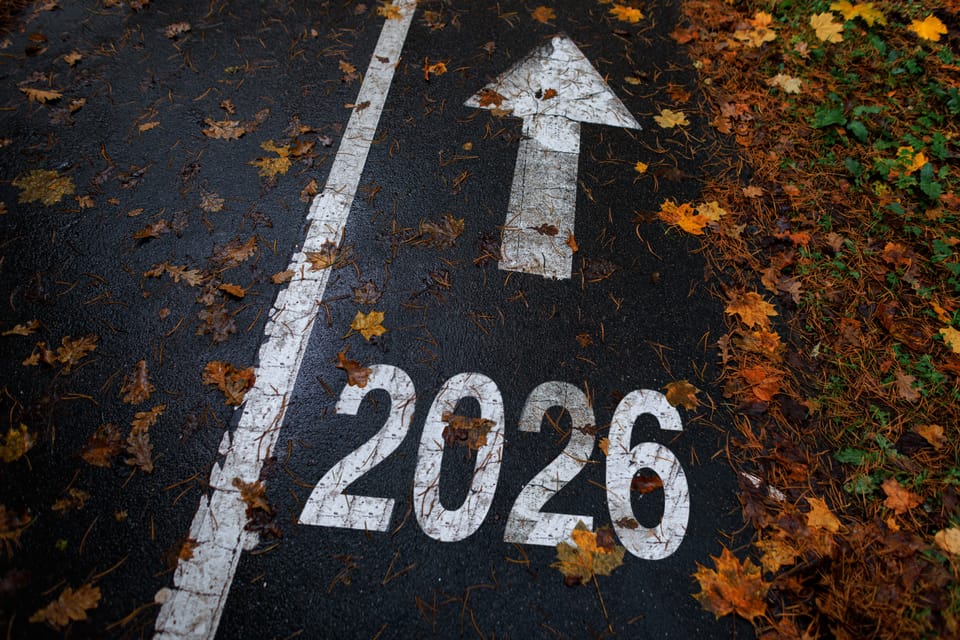The Hidden Balance Sheet: How Enterprise Travel Points Can Unlock Strategic Value
Your company might be sitting on $100K+ in hidden travel value—and not even know it. Points aren’t perks—they’re untapped capital. The smartest enterprises are turning loyalty into ROI, retention, and reward. If your CFO isn’t tracking points, you’re leaving strategy on the table.


If You Only Had 60 Seconds to Read This Article (Click Here)
Most enterprise companies spending $1M–$10M+ annually on travel are leaving 5–6 figures in unclaimed loyalty value on the table each year. That’s because points earned from flights, hotels, and corporate cards are either decentralized across departments, left idle in employee accounts, or redeemed inefficiently. On average, a $3M travel budget can generate between 1.5M–3M transferable points per year—worth $30,000–$90,000 in high-leverage redemptions if managed properly.
When loyalty points are treated like perks instead of assets, the default use case becomes low-value: 60,000 points for a $180 domestic flight, or gift cards with poor redemption ratios. But when centralized and deployed strategically, those same points can unlock $6,000 business-class seats, $500+ luxury hotel nights, or entire offsites funded with rewards instead of cash. Tracking ROI per point—cents-per-point and strategic return—is the only way to properly measure the impact.
Companies that implement centralized earning, redemption hierarchies, and concierge-style approval flows can increase redemption value by 2–4x. For example, redirecting 200,000 points annually from economy redemptions (worth ~$2,400) into premium international business class flights or FHR hotel bookings (worth $8,000+) unlocks not just value, but team satisfaction, client experience, and operational efficiency. At scale, that impact compounds.
The highest-performing enterprises now use points as a layer of culture and strategy: rewarding top performers with 100K+ redemptions, sending execs abroad without budget blowback, and using loyalty as a retention, recruiting, and morale tool. In this new model, points are not just a byproduct of spend—they’re a reinvestment engine. The CFO doesn’t just approve the travel budget—they oversee a loyalty economy that quietly delivers high-margin, non-cash ROI year-round.
Everything else you need to know is just below 👇🏻
Unlocking the Hidden Balance Sheet: Why Loyalty Points are Your Enterprise’s Untapped Asset
In enterprise finance, every dollar has a clearly defined role: marketing budgets tie directly to funnel performance, hiring expenses align precisely with headcount plans, and even seemingly trivial office perks—like breakroom snacks—appear explicitly in EBITDA statements. Yet, surprisingly, many organizations overlook one critical, high-value asset: the loyalty points and miles generated through corporate travel.
If your enterprise annually spends anywhere from $1 million to over $10 million on travel without actively centralizing, managing, and strategically redeeming the resulting rewards, you're not merely missing opportunities—you're effectively leaving a strategic lever completely untouched.
Welcome to your company's hidden balance sheet
The Untapped Opportunity Behind Every Corporate Trip
Most large companies already employ some form of structured travel management—preferred vendors, negotiated rates, travel management companies (TMCs), corporate credit cards, and rebate programs. However, despite these foundational practices, many businesses lack a deliberate strategy around loyalty rewards. Points earned through routine travel activities often become fragmented across departments, individuals, and various platforms, resulting in suboptimal value extraction. Rewards frequently end up:
- Scattered among multiple departments and individual accounts.
- Wasted on low-value redemptions like gift cards or modest domestic flights.
- Left unredeemed, eventually expiring unnoticed.
Even when companies successfully pool points through centralized programs—like American Express Membership Rewards (MR) or Chase Ultimate Rewards (UR)—they rarely deploy them strategically, typically viewing points as minor perks rather than serious financial assets.
This disconnect between significant spend and minimal strategic yield results in substantial missed opportunities for enterprise organizations.
Loyalty Points as Real Currency, Not Just Employee Perks
Consider the scale of potential loyalty rewards. A company spending $5 million annually on travel could easily accrue between $100,000 and $300,000 worth of value in points and miles each year. However, unlike direct rebates or cash-back incentives, loyalty points don't explicitly appear on financial statements. This invisibility leads organizations to undervalue or ignore their potential.
Centralizing your points accrual is the essential first step to leveraging loyalty rewards as working capital. Without centralization, strategic redemption is impossible—you cannot manage, optimize, or even measure value effectively if your points remain scattered and unmanaged. The solution is straightforward: implement a unified corporate card system or a dedicated travel platform that consolidates all earned points into one centralized account.
Three Common Pitfalls in Corporate Loyalty Management
Enterprise organizations typically falter in one—or often multiple—of the following three areas regarding loyalty strategy:
1. Decentralized Earning: The Silent Value Killer
Many companies allow individual travelers or departments to manage their own loyalty accounts, resulting in fragmentation. This practice dilutes the collective value of points, reducing redemption power dramatically.
2. Absence of Strategic Redemption Plans
Even organizations that consolidate points commonly fail to implement strategic redemption policies. Instead, points are often used impulsively—someone needs a flight, they redeem points without regard to their underlying strategic value or optimal timing.
3. Overlooking Cultural Integration
The most successful enterprises embed points deeply into their culture, using rewards as motivational tools to recognize high performance, bolster employee morale, enhance recruitment efforts, and improve retention.
4. Build a Redemption Ladder
Rather than making ad-hoc decisions, structure your loyalty redemptions through a clear, tiered hierarchy. This ensures maximum strategic impact, prioritizing high-value redemptions first:
- Executive Travel: Maximize comfort and productivity.
- Client Hosting: Make a powerful and lasting impression.
- Employee Rewards: Boost morale and improve retention.
- Strategic Initiatives: Fund scouting trips, critical conferences, or last-minute meetings that demand premium accommodations.
- Spillover Uses: Only consider low-yield redemptions (like standard economy flights) when points accumulate beyond strategic needs.
Tracking Real ROI — Not Just Burn Rate
Quantifying the ROI of loyalty points involves more than simply assessing their face value. It's crucial to consider the strategic outcomes that redemptions enable:
- A first-class flight allowing executives to land early, avoid hotel expenses, and attend critical meetings rested offers significant value.
- Business-class seats enabling executives to perform at peak efficiency during capital raises or critical client pitches clearly translate points into tangible, high-value outcomes.
Conversely, redeeming points for inexpensive domestic flights where cash costs are minimal represents poor utilization, translating to negligible strategic benefit.
Adopt a structured framework to assess each redemption’s strategic outcome. This involves measuring not just cents per point but tangible outcomes per redemption, reinforcing a more disciplined and high-value redemption approach.
Transforming Travel Spend with Strategic Loyalty Management
Let’s explore how strategic loyalty management transforms a typical enterprise scenario. Consider a hypothetical organization with a $3 million annual travel budget:
Baseline Scenario (Situation A)
- 15 departments and 100+ travelers
- Multiple corporate cards, decentralized accrual
- No central policy or tracking mechanism
- Redemptions largely impulsive, manual, and inefficient
- Outcome: Approximately 200,000 points wasted annually through low-value redemptions or expiry, zero strategic visibility.
Optimized Scenario (Situation B)
- Centralized corporate card system (pooled rewards through programs like Amex MR or Chase UR)
- Integrated travel management using a specialized points-redemption concierge (e.g., UpNonStop Concierge)
- Regular reviews of points accrual vs. strategic redemption
- Structured redemption hierarchy guiding decision-making
- Incentive programs directly tied to loyalty points, motivating performance and improving morale
- Outcome: Every 100,000 points translates into $2,000–$5,000 of strategic value—enhancing employee satisfaction, executive efficiency, and overall budget impact.
Avoiding Common Pitfalls in Redemption
One frequent mistake enterprises make is using points for low-cost flights or modest hotel stays simply because the points are available. This reduces your return on loyalty significantly.
Preserve points specifically for premium scenarios—luxury travel, premium accommodations, international or last-minute flights—where cash expenditures would otherwise be prohibitive. This ensures you achieve the highest strategic return from every point redeemed.
Loyalty Points as a Strategic Retention Tool
Points don’t just deliver financial value—they also function as powerful HR tools, motivating and retaining top talent without incurring additional payroll costs.
Awarding high-performing employees with significant loyalty points—say, 100,000 points as recognition for exceptional performance—translates to a memorable experience valued at approximately $4,000–$6,000, tax-efficiently and effectively motivating recipients far beyond traditional cash bonuses.
Building an Efficient Redemption System
Ensuring optimal management requires structured administration, policy enforcement, and seamless user experience. Creating an internal redemption concierge service, or partnering externally with specialized redemption platforms, simplifies the entire redemption process.
Designate a centralized point-redemption concierge equipped with clear workflows, approval processes, and strategic oversight. Employees request travel rewards directly through this channel, ensuring maximum visibility and efficiency, eliminating impulsive decisions, and significantly reducing administrative overhead.
Reimagining Corporate Travel as a Unified Strategic Asset
At large scales, distinctions between corporate travel, incentive travel, client hospitality, and executive-level scouting blur. Organizations no longer need separate platforms or fragmented systems. A unified loyalty strategy adaptable to every scenario becomes essential.
Implementing a unified redemption strategy—such as through UpNonStop’s comprehensive concierge service—allows enterprises to seamlessly handle all types of travel scenarios through a single optimized point-management system, streamlining processes, increasing visibility, and significantly enhancing value extraction.
Why Strategic Loyalty Management Matters Now
As global travel reemerges robustly following recent disruptions, enterprises face dual challenges of increased employee expectations and tighter budget constraints amid inflationary pressures. Leveraging loyalty points strategically acts as a financial pressure valve, stretching every dollar further, enhancing employee experiences, and driving client satisfaction without requiring additional budget allocation.
Final Thoughts: Elevating Loyalty Points to the CFO’s Radar
For a truly strategic approach, the CFO should always be aware of your organization's loyalty points balance and understand their intrinsic financial value. Loyalty points represent a flexible, high-ROI asset capable of substantially improving competitive positioning, employee satisfaction, client relationships, and overall financial performance.
Ultimately, leading enterprises won’t simply manage travel—they’ll strategically engineer outcomes through deliberate, disciplined loyalty management. Every loyalty point will be acknowledged, valued, and carefully leveraged, serving as integral capital in a strategically managed enterprise.
The question for your organization is clear: Are you ready to transform your hidden balance sheet into your greatest competitive advantage?




